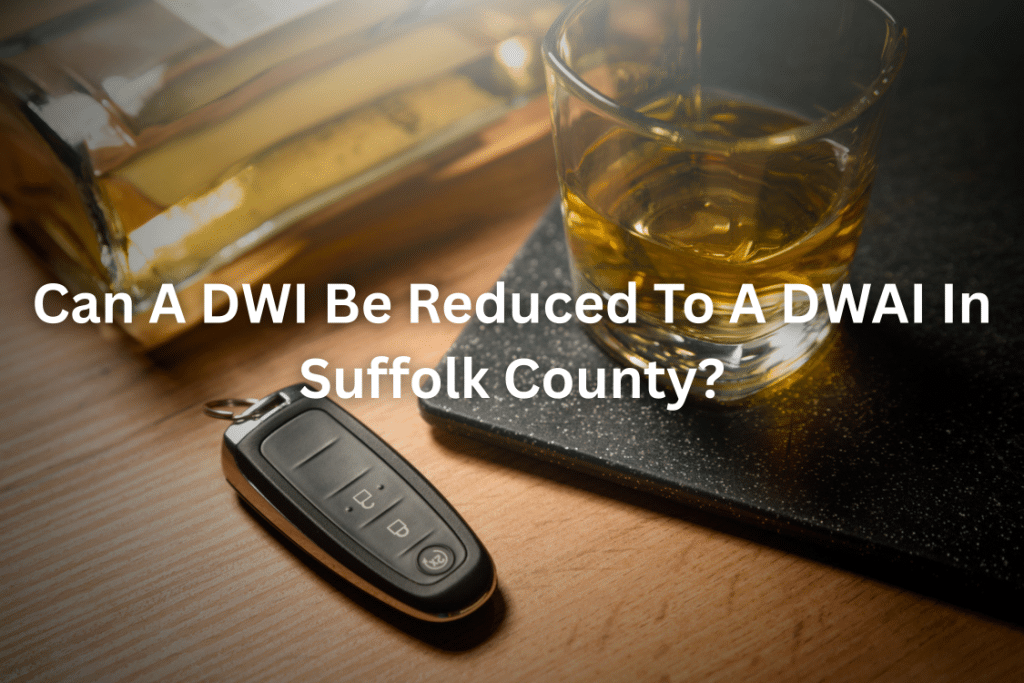
I’m Ed Palermo, a Suffolk County DWI and criminal defense attorney with over three decades of experience in New York courts. I’ve represented many Long Islanders who never imagined they would be standing in a criminal courtroom. Sometimes I’m asked after a DWI arrest is whether the charge can be reduced to DWAI. The short answer is sometimes, under the right circumstances and with the right strategy. Let’s go through what that reduction means, the factors prosecutors consider, and how I approach these cases to put my clients in the strongest possible position.

In New York, a first-offense DWI under Vehicle and Traffic Law §1192(2) or (3) is a misdemeanor. It carries a criminal conviction, fines, up to one year in jail, a six-month license revocation, and an ignition interlock device requirement. A DWAI under §1192(1) is different. It’s a traffic infraction—not a crime. Penalties typically include fines, a mandatory surcharge, up to 15 days in jail (rare for first offenders), and a 90-day license suspension. The critical difference is the criminal record: a DWI conviction is a crime that can follow you on employment and background checks; a DWAI is not a criminal conviction.
Every case is unique, but there are common themes that make a DWI-to-DWAI reduction more likely in Suffolk County:
There are also factors that commonly block reductions:
Prosecutors consider both the strength of their case and the total picture of the person standing before the court. My job is to improve both sides of that equation for my client.
First-offense cases with no aggravating facts are the most likely candidates for a DWAI reduction. If you have a prior alcohol-related offense within the statutory period, a reduction can still be possible in certain scenarios, but the path is narrower and the conditions—such as extended treatment or long-term monitoring—are often more demanding. Each file needs individualized analysis.
Most Suffolk County DWI cases begin with an arraignment, where license issues may arise immediately. From there, discovery is exchanged and I file appropriate motions to challenge the stop, the arrest, and the admissibility of evidence. During this time, I encourage clients to complete an alcohol assessment and follow recommendations. Those proactive steps demonstrate accountability and can support negotiations for a favorable disposition. If the case cannot resolve on terms that protect your future, I am fully prepared to litigate suppression hearings and take the case to trial.
Beyond avoiding a criminal conviction, a DWAI resolution can mean shorter license consequences, lower fines, and no ignition interlock requirement that follows a DWI conviction. For many clients—licensed professionals, commercial drivers (noting that CDL holders face separate federal and DMV consequences), students, and caregivers—the difference between a crime and a traffic infraction is life-changing. It impacts licenses, employment, immigration questions, and professional background checks.
Not automatically. A refusal creates a separate DMV process and can be used by the prosecution at trial, but if the rest of the case is weak or you present strong mitigation, a reduction can still be achievable. The overall story matters.
Higher readings make reductions harder, but they don’t end the conversation. Device reliability, observation period, medical issues, or video that contradicts the narrative can still change the calculus.
Minor, no-injury fender-benders may still allow room to negotiate, especially with clean history and strong remediation. Injury cases are more challenging and require a different approach.
Courts and prosecutors take treatment seriously. Completing an evaluation and following recommendations is often a key part of earning a reduction and can help with license privileges.
Reductions don’t happen at arraignment. They are usually earned over weeks to months of legal work, discovery review, motion practice, and steady mitigation. I keep clients informed at every step, explain options clearly, and calibrate expectations based on the real posture of the file—not wishful thinking.
Yes a DWI can be reduced to a DWAI in Suffolk County under the right facts, with the right preparation, and with a strategy tailored to your life and goals. No lawyer can promise a particular outcome, but experienced advocacy, careful investigation, and a credible mitigation plan can put you in the best position for the result you want.
If you or a loved one was arrested for DWI in Suffolk County, I’m here to help. I bring more than three decades of focused criminal defense experience and a client-first approach to every case. Contact me for a free, confidential consultation so we can talk through your options and start building a plan that protects your future.